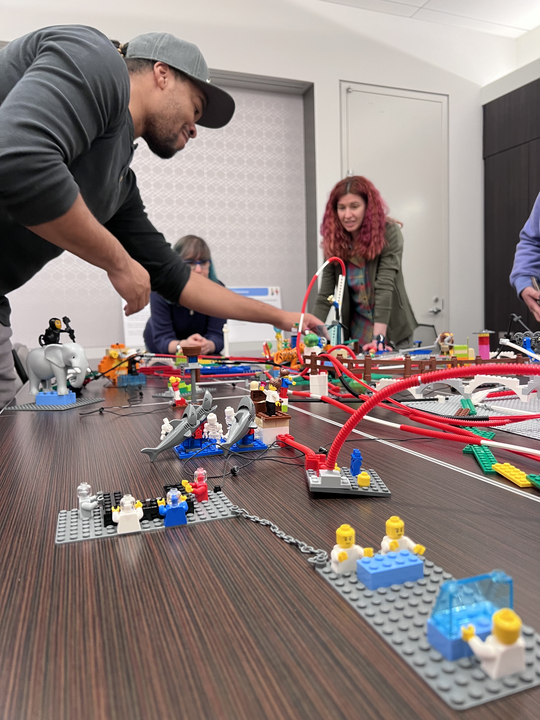In April 2024, I attended a week-long training in Chicago to become a certified LEGO Serious Play facilitator. LEGO Serious Play (LSP) is a methodology developed in the early 2000s by the LEGO Group to unlock innovation and creative thinking using LEGO bricks. LSP is a highly engaging way for a group to share ideas and assumptions and to engage in rich dialogue and discussion to work out meaningful solutions to real problems.


Using a curated selection of bricks and a thoughtful sequence of building “challenges,” the facilitator guides the 10-12 participants to build individual and shared models. Unlike most meetings, where the loudest or most important people in the room do most of the talking, LSP is designed to bring out everyone’s perspectives and gives everyone a psychologically safe space to share their ideas. A typical workshop takes a full day, but it can be adapted to shorter times.
Participants do not need to have any experience with LEGO, although it’s hard to find people these days who haven’t had any exposure to LEGO. Building challenges are never literal, like creating a car or fire station. Building is metaphorical, with challenges like “build your nightmare boss,” or “build what it means to trust your team.” In the example at right, I built a model of Willy from Indiana Jones and the Temple of Doom, from the scene where she’s standing in the middle of the rope bridge above a river gorge with alligators, and Indy says, “Trust me” right before he cuts the rope.


After building their models, each participant shares it with the group, explaining why they built it the way they did and what it means. All discussion is focused on the meaning of the model, not what the participant thinks or believes. This creates a safe space to speak truth to power and helps bring shy or introverted people into the main solution-creating conversation. This works especially well with groups that do not usually work together or share ideas, like students with professors and school administrators or health insurance company workers with physicians and patients.
LSP workshops can also help misaligned groups build a shared vision or strategy. For example, after each participant builds their version of the ideal future strategy for their department or product, facilitators ask them to select the most important part of their model. Then, they break into small groups and have to bring that part of their model forward into a shared model. The group must collaborate to build a coherent story around their shared vision. Variations of this technique can get even more advanced, using connections to tell stories of interdependent relationships and cause-and-effect loops.


My big takeaway is that LSP is an incredible tool to unlock creativity and innovation in any organization for just about any business problem. In my work as a product designer and researcher, I see a number of practical applications:
- New product development
- Product strategy and vision
- User research – especially with kids!
- Service blueprint design
- Cross-functional alignment
- Design team vision & mission
- Brand strategy / re-design
If you’d like me to help your organization with any of these, let’s talk!





